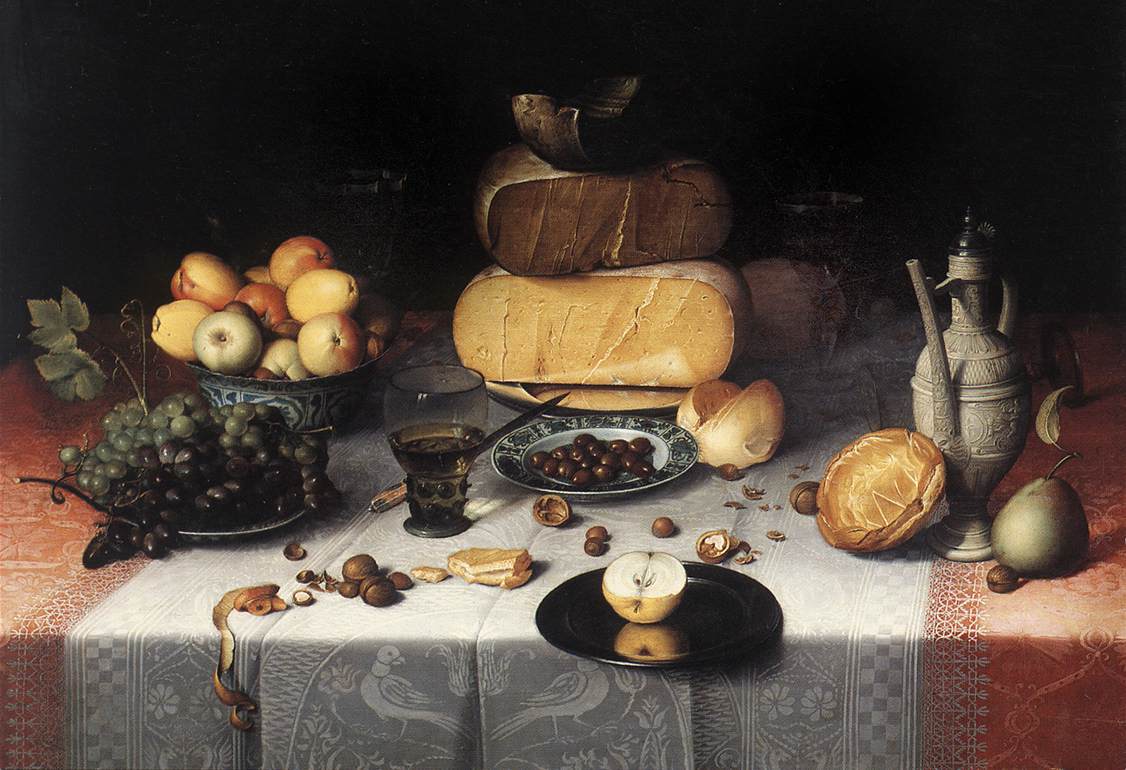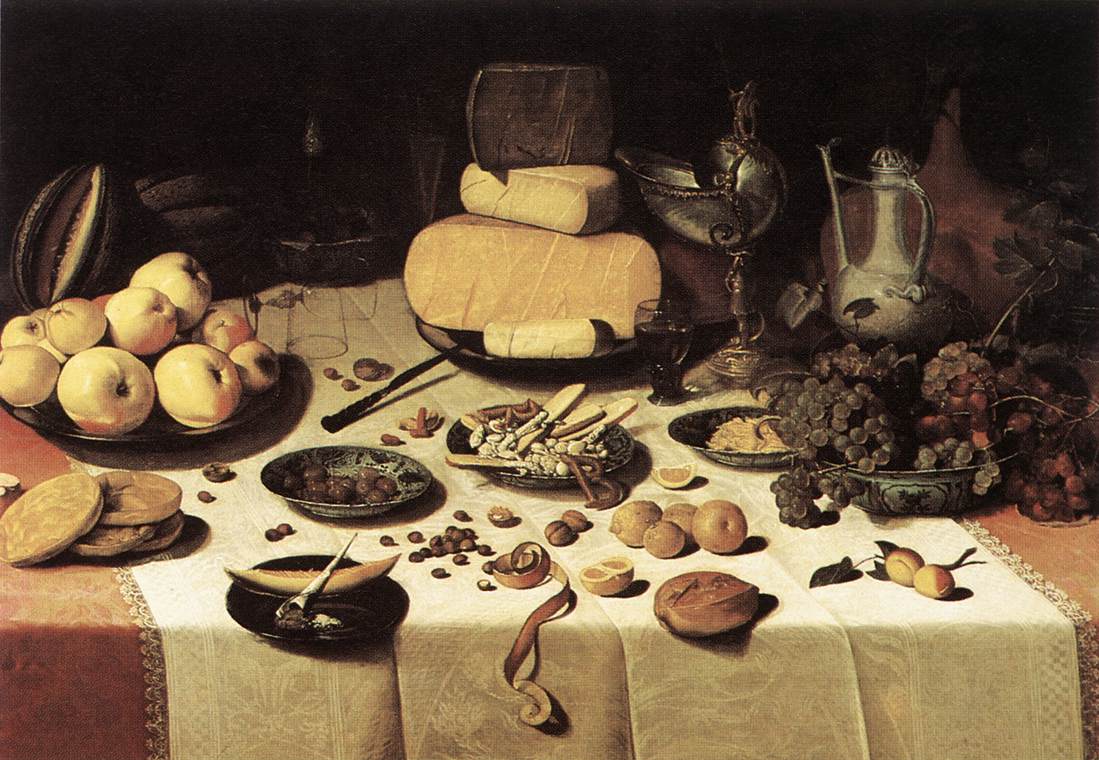|
|
|
|
home
|
|
DIJCK, Floris
Claesz van/ ARTISTS BEFORE 1650/ ART MAIN
|
original
lfff site
|
|
(b.
1575, Haarlem, d. 1651, Haarlem)
|
film and food
|
Dutch painter, specialized particularly in
kitchen and fruit still-lifes. There is an affinity between his motifs
and those of Nicolaes Gillis and Floris van Schooten.

|
literature and food |
music
and food
photography and food |
|
artists before 1650 bookshop (UK) |
|
|
Still-Life with Cheeses
Oil on wood
Rijksmuseum, Amsterdam
|
|
|
Early seventeenth-century still-life
painters of food depict objects from a high point of view, to show as
much as possible of the surface of a table, a vantage point similar to
the one used by contemporary landscape, marine, and architectural
painters. Symmetrically arranged platters of fruit, cheese, nuts,
sweets, as well as glasses, jugs, and knives, are spread upon a flat
tablecloth. The intimate objects appear to pose in a steady light,
showing how carefully every surface and texture has been scrutinized and
how faithfully everything has been rendered. It is perhaps difficult for
us to imagine the amazement and sheer delight seventeenth-century
observers took in the skill of artists who could represent delicious
food with such exactitude: our eyes have been numbed by countless colour
images of food illustrated in cookery books and advertisements designed
to sell packaged edibles.
|
|

|
|
Laid Table
1622
Oil on wood, 100 x 135 cm
Private collection
|
|
The aesthetically
conservative principle of tables arranged strictly parallel to the
horizontal edges of the painting was followed by Nicolaes Gillis and
Floris Claesz van Dijck. (Predecessors were probably family paintings
such as Marten van Heemskerck’s.) Their still-lifes are classified as ‘ontbijtjes’
(breakfast still-lifes). Onbijt(je) was a light meal which could be
taken at any time of the day. Strictly speaking, most of the paintings
by Gillis and van Dijck are dessert still-lifes, developed at roughly
the time by Osias Beert and Clara Peeters.
All these artists show a
table with a table runner and a carefully ironed, white damask
tablecloth whose creases, regardless of the laws of perspective, run in
parallel lines towards the back of the painting. A relatively high
viewpoint was also chosen, apparently to afford a good overall survey of
the objects, which are arranged side by side, or in a circle, hardly
ever touching or overlapping. The precious drinking vessels and pieces
of textile show very clearly that the arrangement is that of a
privileged household.
In accordance with
etiquette, fruit, pies, nuts and confectionery were served as a dessert.
Cheese, which had a central role in Gillis’s and van Dijck’s art, was
also part of the dessert. Gillis and van Dijck build up pyramids of hard
cheese in two or three layers: at the bottom there is half a large
cheese with a rich, yellow hue, indicating that it is still very young,
while on the top the cheeses are smaller and more brownish, almost grey
in colour, showing that they are older and more mature. The irregular
traces of cuts with a knife – the only piece of cutlery on the table –
are rendered extremely well.
|
|